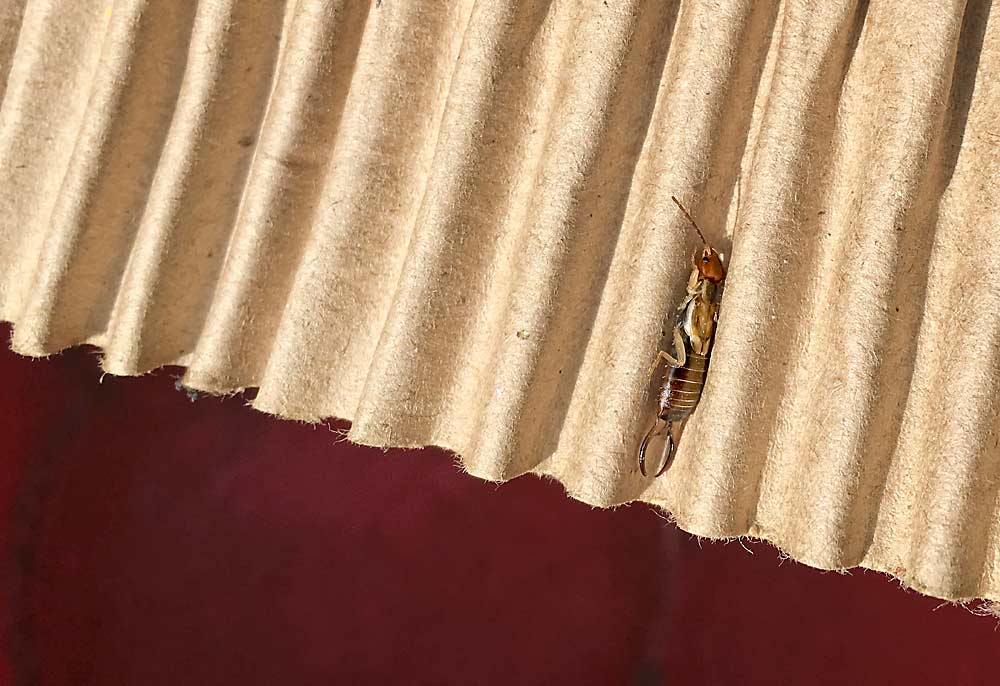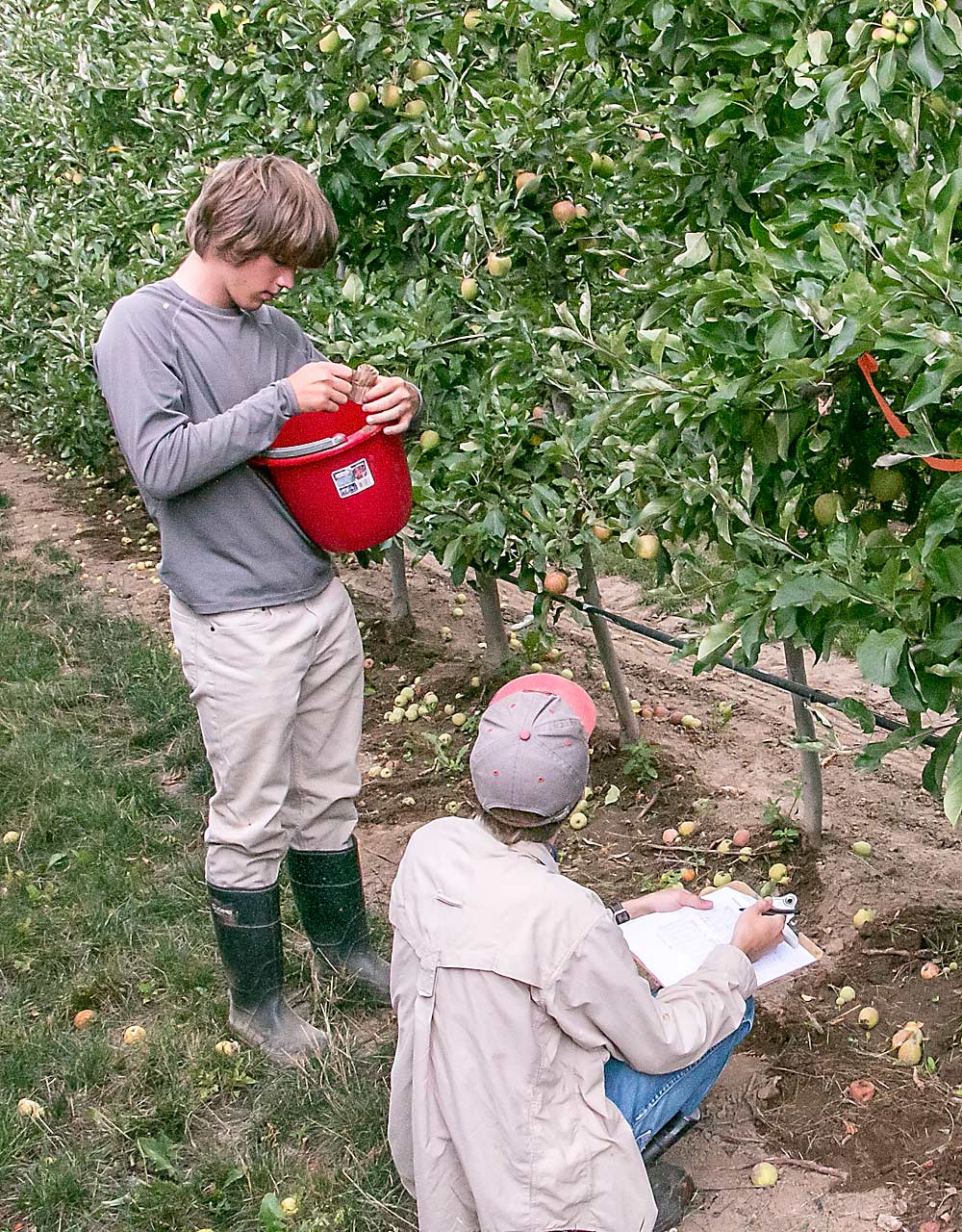
Earwigs curtail populations of woolly apple aphid, but Robert Orpet already knew that. It turns out they do so without causing their own damage to the fruit they’re enlisted to protect.
“There was no evidence that earwigs increased damage,” said Orpet, a post-doctoral entomologist at Washington State University in Wenatchee.
He spent five years involved with several research projects that dealt with controlling woolly apple aphid with earwigs, among other methods. Aphids infest roots, grafting points, winter injuries and pruning wounds, cutting yields by up to 5 percent and leaving behind a sticky waste that can harbor fungal pathogens.
Orpet learned that earwigs love woolly apple aphid colonies. One time-lapse video shows a single earwig devouring a woolly colony overnight, leaving the branch clean the next morning. Empirically, his research showed the earwigs suppressed woolly populations and did not require high population densities of their own to do so.
However, he determined most of that early in his work.
More recently, he and colleagues concluded that earwigs, an omnivorous pest in their own right in other crops, do not attack apples that are not already damaged. The study compared fruit damage in blocks in which Orpet released thousands of earwigs and those where he removed earwigs. There was no difference between the two.
That doesn’t mean earwigs won’t eat apples. They found earwigs on already-damaged fruit. Stem bowl splits were a popular hangout, he said. The insects sometimes chewed around the rims of wounds, making them bigger, but didn’t cause their own. Besides, most of his grower collaborators told him an apple with a stem bowl split of any size is culled.
He even tried trapping earwigs in a container of picked apples with nothing else to eat. Only then, after several days with no other food, did they leave any traces of chewing.
In conclusion, earwigs don’t cause their own fruit damage in the orchard, as far as he could tell in his research.
Also, his video footage shows that earwigs don’t seem to fight with other beneficials, such as ladybugs or lacewings, and ignore the larvae of other aphid predators.
“They’re kind of wimps,” he said. Thus, they could be used in combination with other beneficials.

Up next
The next step, as is common with research, is application. Just how, exactly, do you go about putting earwigs where you need them?
Orpet and Louis Nottingham, a Washington State University entomologist who works mostly in finding biological measures to control pear psylla, began testing earwig application as part of a pear IPM project last year, funded by the Washington Tree Fruit Research Commission. The commission also funded the apple research.
Rebecca Schmidt-Jeffris, an entomologist with the U.S. Department of Agriculture in Wapato, Washington, also has earwig-related projects in mind and plans to collaborate with Nottingham and Orpet.
Schmidt-Jeffris does not believe growers will be able to just order a batch of earwigs the way they can ladybugs. In North America, earwigs reproduce only once per year and rear their offspring in the soil. The adults have wings, but they just don’t like using them for some reason, she said. And they don’t crawl very far either.
More likely, growers will need to do what Orpet did, catch them and move them. In areas with earwigs, he simply hung rolled-up strips of corrugated cardboard, which attracts the nocturnal insects during the day, and then dumped them out onto tree roots in areas he wanted them.
Schmidt-Jeffris aims to determine best practices for earwig relocation. How big of a cardboard strip works best? Is a roll hung from a low branch better than banding the trunk? What earwig release rates are optimal?
If researchers can answer those questions, earwigs could be a big boon to growers, Schmidt-Jeffris said. The critters need little care, survive long periods without food and don’t fly away.
“In that sense, it’s a very grower-friendly type of program,” Schmidt-Jeffris said.
—by Ross Courtney
Related:
—Can earwigs be beneficial in some orchards? – Video
—Woolly surge






Leave A Comment